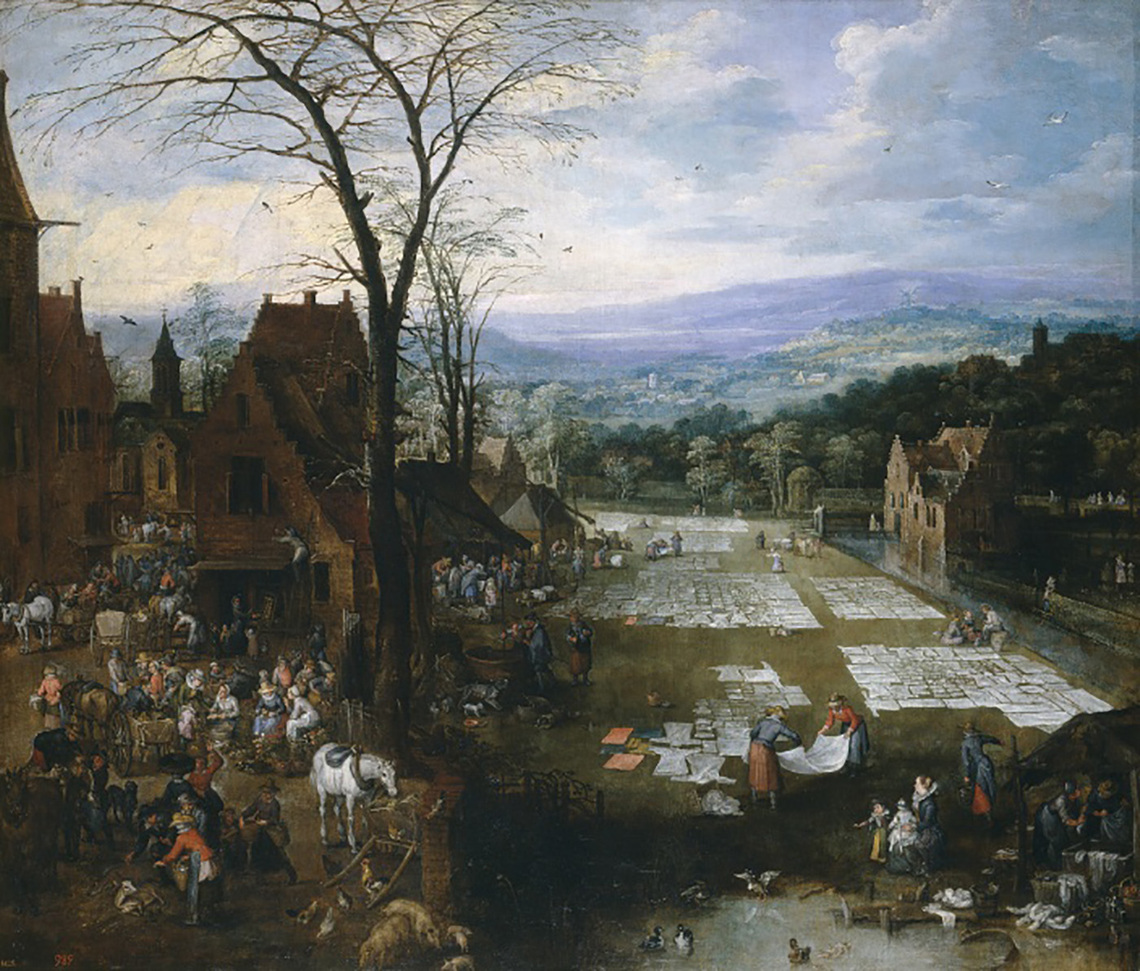Market and Bleaching Ground
| Object type | Painting |
| Genre | Staffage in Landscape |
| Date | 1620-1623 |
| Dimensions | 166 x 194 cm |
| Support | Canvas |
| Medium | Oil |
| Collaborators | Joos de Momper |
| Our attribution | Jan Brueghel the Elder |
| Other authorities | Ertz 2008-10, #718 Ertz 1979, #423 |
| Location | Madrid, Spain |
| Collection | Museo del Prado |
| Accession numbers | inv. #1443 |
| Series | Madrid Village Scenes |
| Tags | Bleaching, Market, Birds, Dog, Horse, Swine, Village, Momper, Pond, Stream, Valley, Burghers, Peasants, Labor, Cart |
| External resources | Museo del Prado |

I believe that this was somehow a pendant of Prado #1440, which has also been suggested but not pursued by Ertz and others. They are the same in one dimension (and their dimensions are unique for Jan) and could have been meant for a specific site. In the 1772 inventory this one was paired with a work by Jan Wildens (Prado #1896); those two are indeed of the same size and could be joined by the theme of water since the Wildens shows the waters of Spa, near tours(Sutton has pointed this out as well). In that work the staffage may be by Vrancx. But for the present work, the other Momper/Brueghel work is a much more logical pairing. Or perhaps the three were a set originally (separated by the time of the inventories below) and the theme was something about the health of country living?
In the 1700 inventory of the Zarazuela there is a listing as follows: "Dos paises de dos varas y media en cuadros flamencos con variedad de figuras, y en el uno hay unas lavanderas con ropa tendida, tasadas a 60 doblones cada una, pieza quinta, nums 66 y 67."
At the Alcazar it is described, in 1772, as follows: "Dos paises iguales, el uno con un lavadero y tendedero de ropa y otro en que exponen un mapa a una señora, originales flamencos de la escuela de Brueghel de dos varas de largo y ona vara y tercio de caida."
The two were valued at 40,000 reales in 1794 in the Queen's inventory, and at 60,000 in 1834, as works by Jan Brueghel.